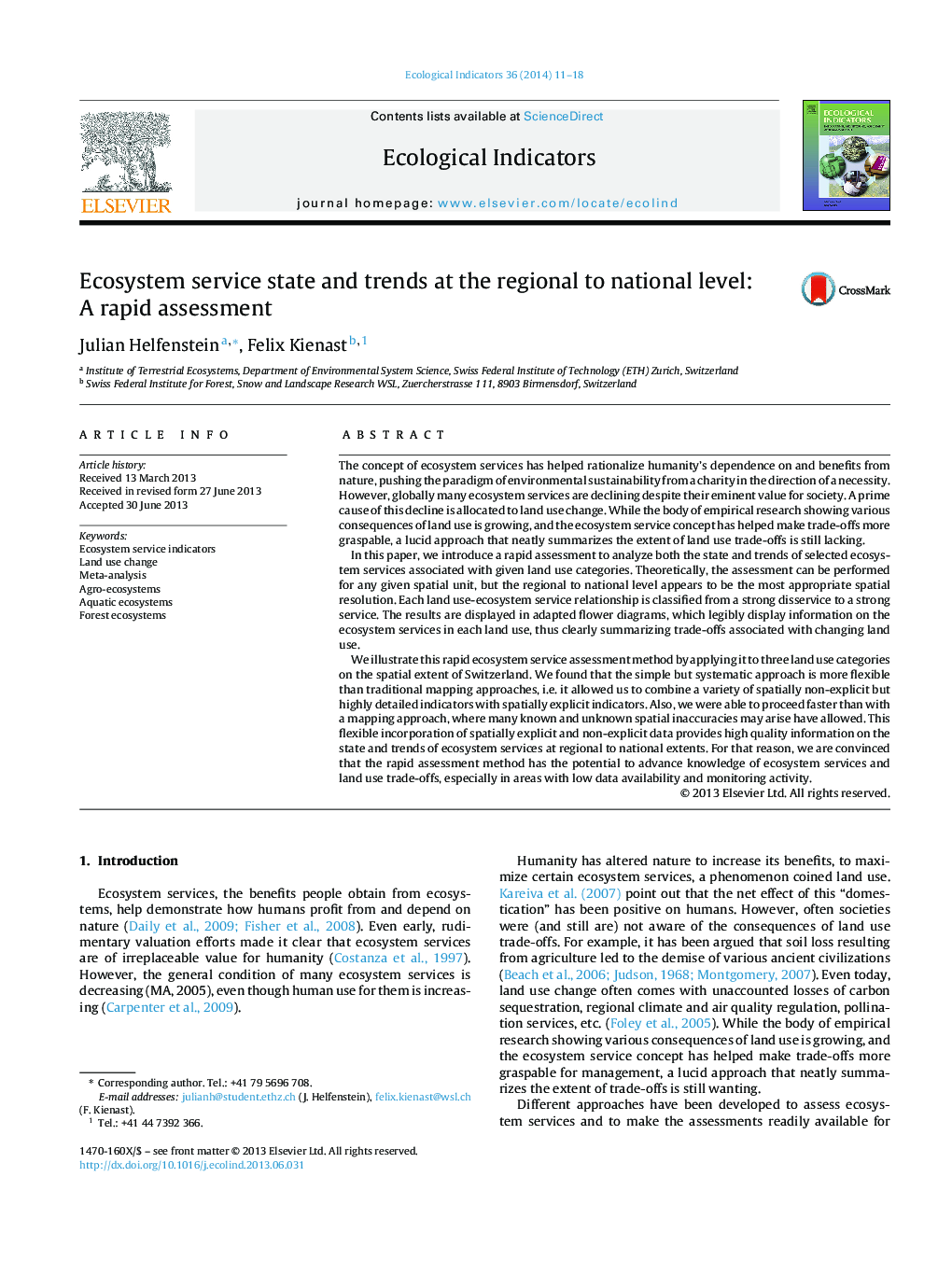| Article ID | Journal | Published Year | Pages | File Type |
|---|---|---|---|---|
| 4373292 | Ecological Indicators | 2014 | 8 Pages |
•We developed a new rapid ecosystem assessment for ecosystem services/disservices.•Ecosystem service states and trends are displayed in flower diagrams.•We apply the method to 3 land use types in Switzerland using 129 indicators.•We highlight 4 land use-ecosystem service relationships.•We point out a spatial resolution, ecological relevance compromise.
The concept of ecosystem services has helped rationalize humanity's dependence on and benefits from nature, pushing the paradigm of environmental sustainability from a charity in the direction of a necessity. However, globally many ecosystem services are declining despite their eminent value for society. A prime cause of this decline is allocated to land use change. While the body of empirical research showing various consequences of land use is growing, and the ecosystem service concept has helped make trade-offs more graspable, a lucid approach that neatly summarizes the extent of land use trade-offs is still lacking.In this paper, we introduce a rapid assessment to analyze both the state and trends of selected ecosystem services associated with given land use categories. Theoretically, the assessment can be performed for any given spatial unit, but the regional to national level appears to be the most appropriate spatial resolution. Each land use-ecosystem service relationship is classified from a strong disservice to a strong service. The results are displayed in adapted flower diagrams, which legibly display information on the ecosystem services in each land use, thus clearly summarizing trade-offs associated with changing land use.We illustrate this rapid ecosystem service assessment method by applying it to three land use categories on the spatial extent of Switzerland. We found that the simple but systematic approach is more flexible than traditional mapping approaches, i.e. it allowed us to combine a variety of spatially non-explicit but highly detailed indicators with spatially explicit indicators. Also, we were able to proceed faster than with a mapping approach, where many known and unknown spatial inaccuracies may arise have allowed. This flexible incorporation of spatially explicit and non-explicit data provides high quality information on the state and trends of ecosystem services at regional to national extents. For that reason, we are convinced that the rapid assessment method has the potential to advance knowledge of ecosystem services and land use trade-offs, especially in areas with low data availability and monitoring activity.
